Finding new keywords helps you create content for an increased number of search queries so you can attract more potential customers to your website.
Finding new keywords can also help you:
- Stay ahead of competitors by targeting search terms they might not be using yet
- Discover gaps in your existing content that you can fill to better serve your audience
- Reach new audiences through keywords you aren’t targeting yet but are relevant to your business
- Optimize ad spend by finding low-competition keywords you aren’t using in your campaigns
You can find new keyword opportunities with these six tools.
1. Google Search Console
You can use Google Search Console to find which keywords you rank for but don’t explicitly target with any dedicated content.
To start, head into your GSC property.
Click “Search results” under “Performance.” Check the boxes next to “Average CTR” and “Impressions.” Then scroll down to the table.
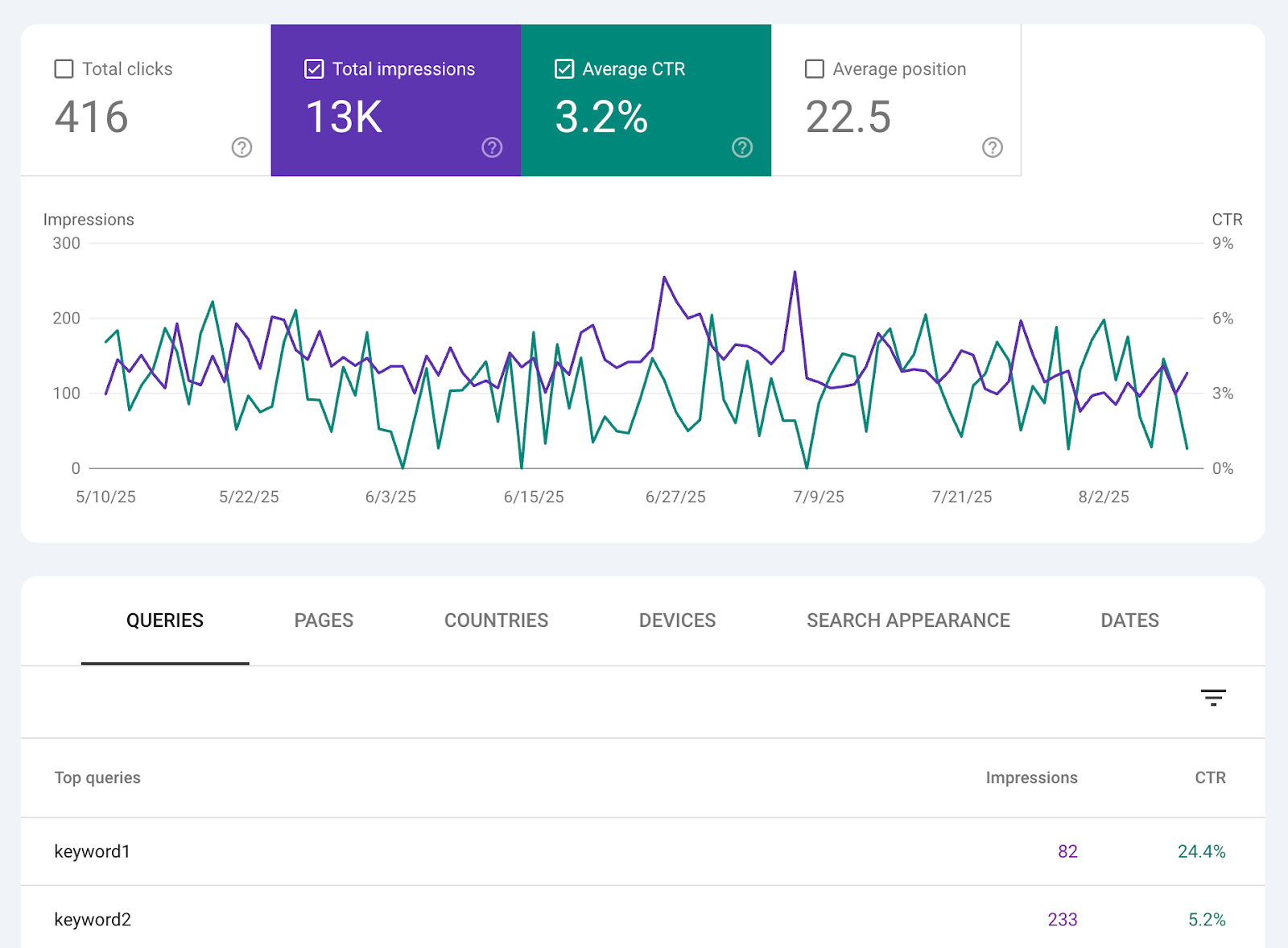
Look for keywords with low click-through rates (CTRs) and high impressions. These are terms your content appears for but that rarely result in clicks.
A low CTR paired with high impressions could mean your content doesn’t align with what searchers want. What searchers want is called search intent.
In this instance, you’ll likely want to create new content for those keywords.
Aleksandr Adamenko, Co-Founder and Product Owner at Winday, looks for keywords with high impressions and either a low CTR or ones that rank in position 10 or greater.
Aleksandr’s team then reviews pages and decides which new keywords can be included in their content to increase relevance. Or decide if they should create a new page altogether.
After adding new keywords to the text of landing pages, we received an increase in the number of requests for our product’s demo version by 20% in six months.
2. Keyword Magic Tool
Semrush’s Keyword Magic Tool lets you prioritize which new keywords to target based on how difficult it would be for your specific domain to rank for them.
To start, enter a seed keyword (a broad keyword relevant to your niche). Then, add your homepage URL and target location. Click “Search.”
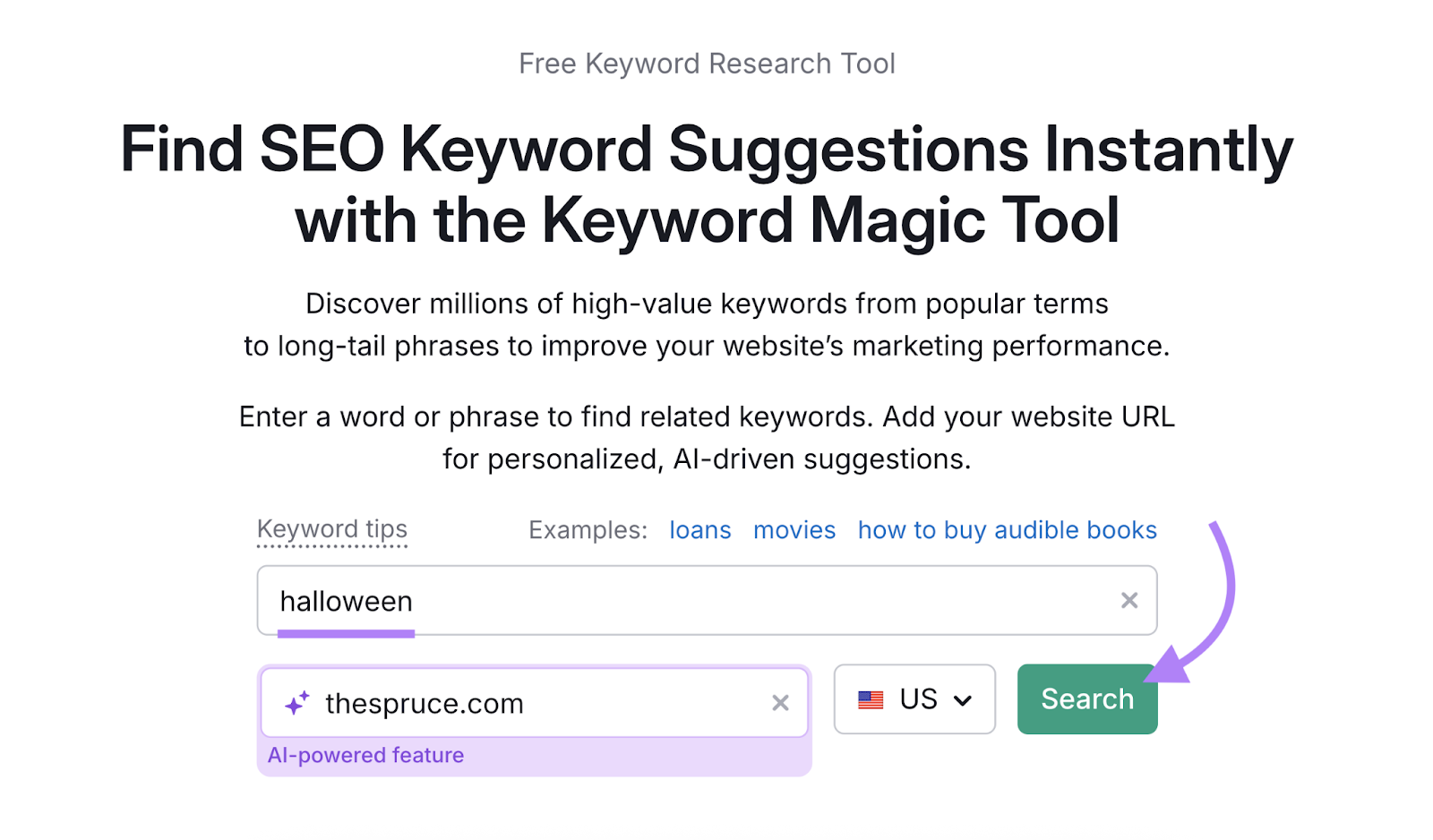
The next page shows you potentially thousands of relevant keywords.
Exclude terms you already rank for by toggling off “Show ranking keywords.”
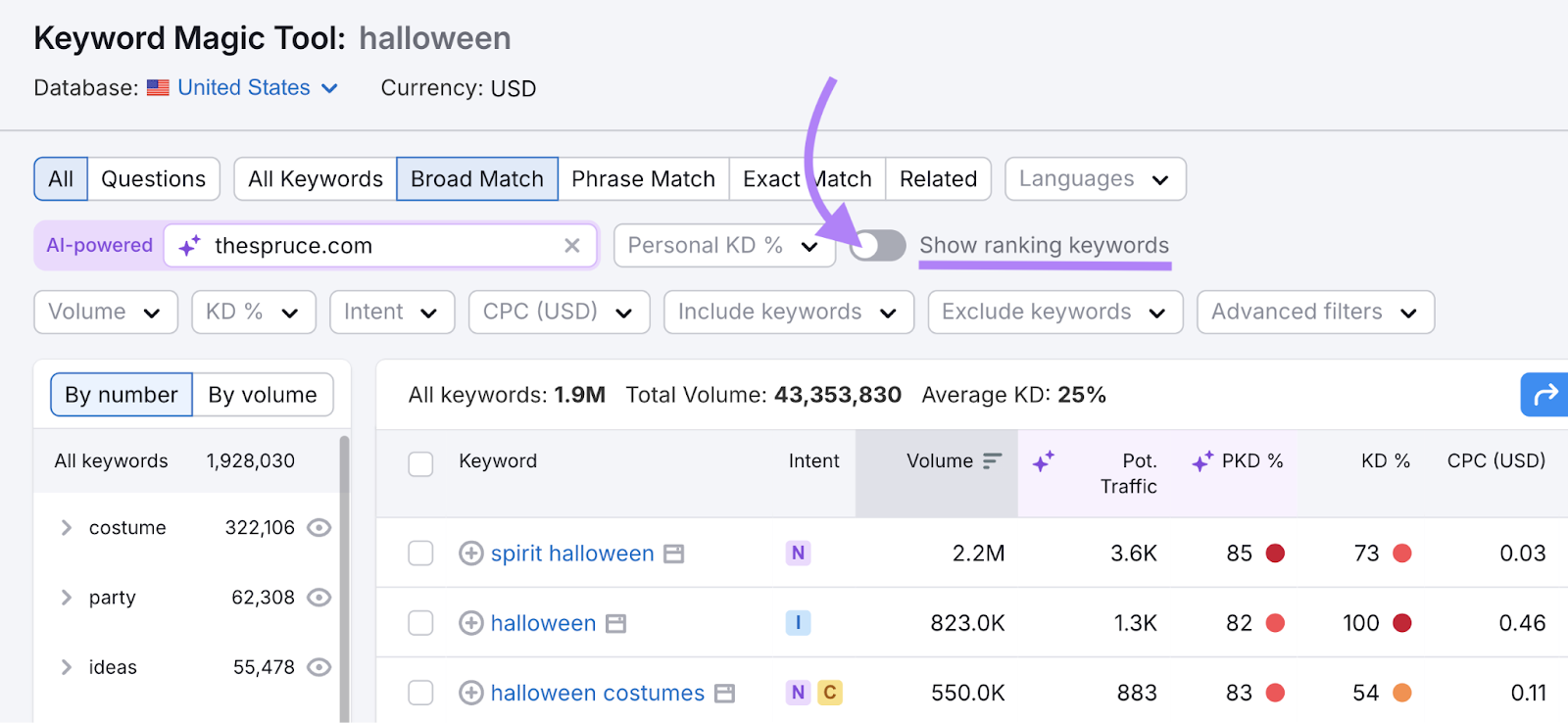
Review the list for the most relevant terms and evaluate each term’s potential traffic (Pot. Traffic) and Personal Keyword Difficulty score (PKD %). To understand how much traffic you might get and how difficult ranking could be.
And consider “Intent,” so you know what type of content searchers want.
I was able to find eight new keywords for The Spruce’s website that could potentially drive over 1,000 additional visitors for Halloween-related content.
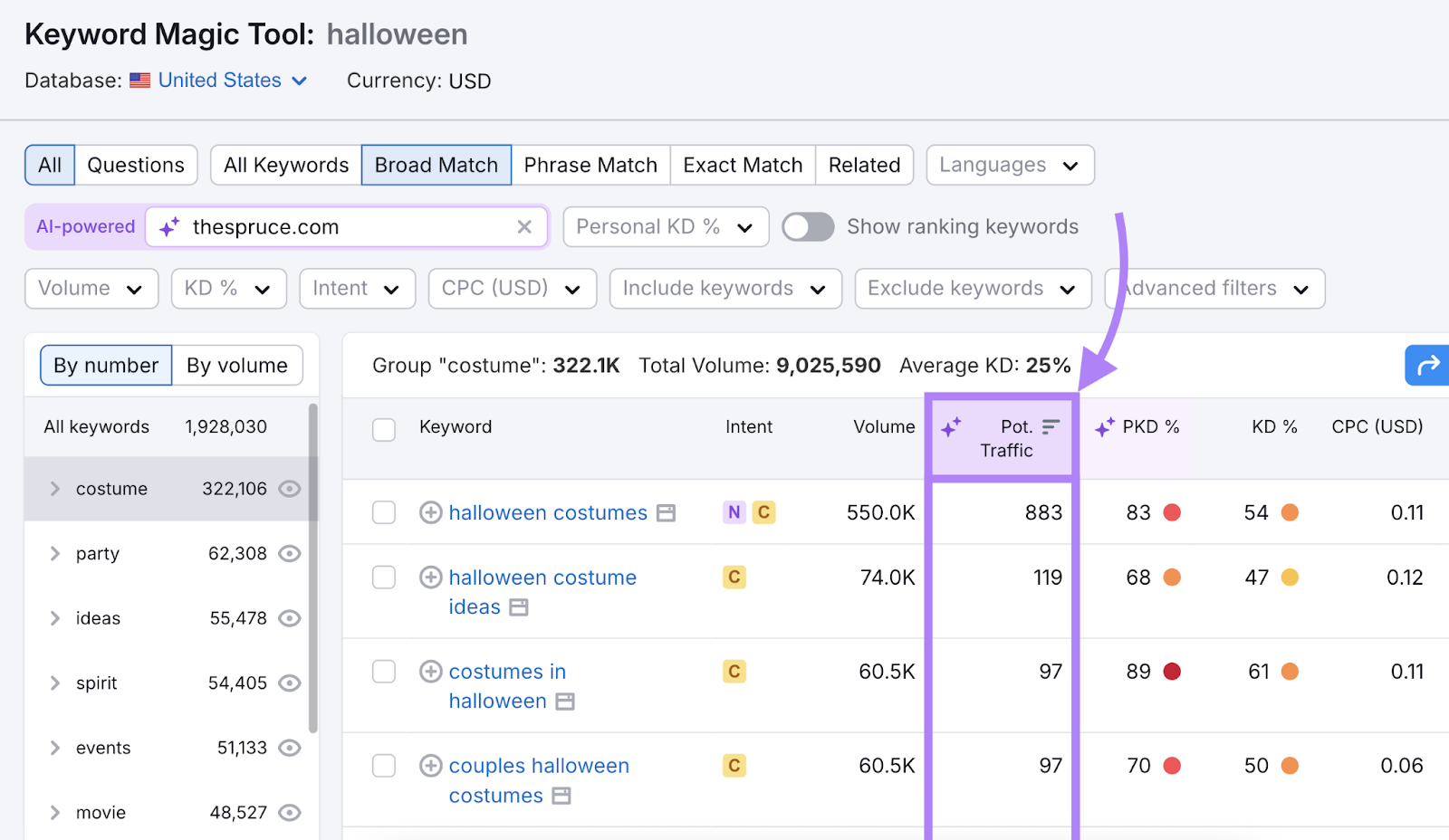
3. Keyword Planner
Google’s Keyword Planner is meant for paid ads, but it can give you new keyword ideas for organic search.
To start, head to your Google Ads account and make sure you’re in “Expert Mode” by clicking the settings icon located in the top right of the page.
Click “Tools,” “Planning,” and “Keyword Planner.” Then select “Discover new keywords.”

Enter one or more seed keywords relevant to your business (and your domain if you wish). Click “Get results.”

You’ll get a list of keywords. Click “Refine keywords” to filter your list.
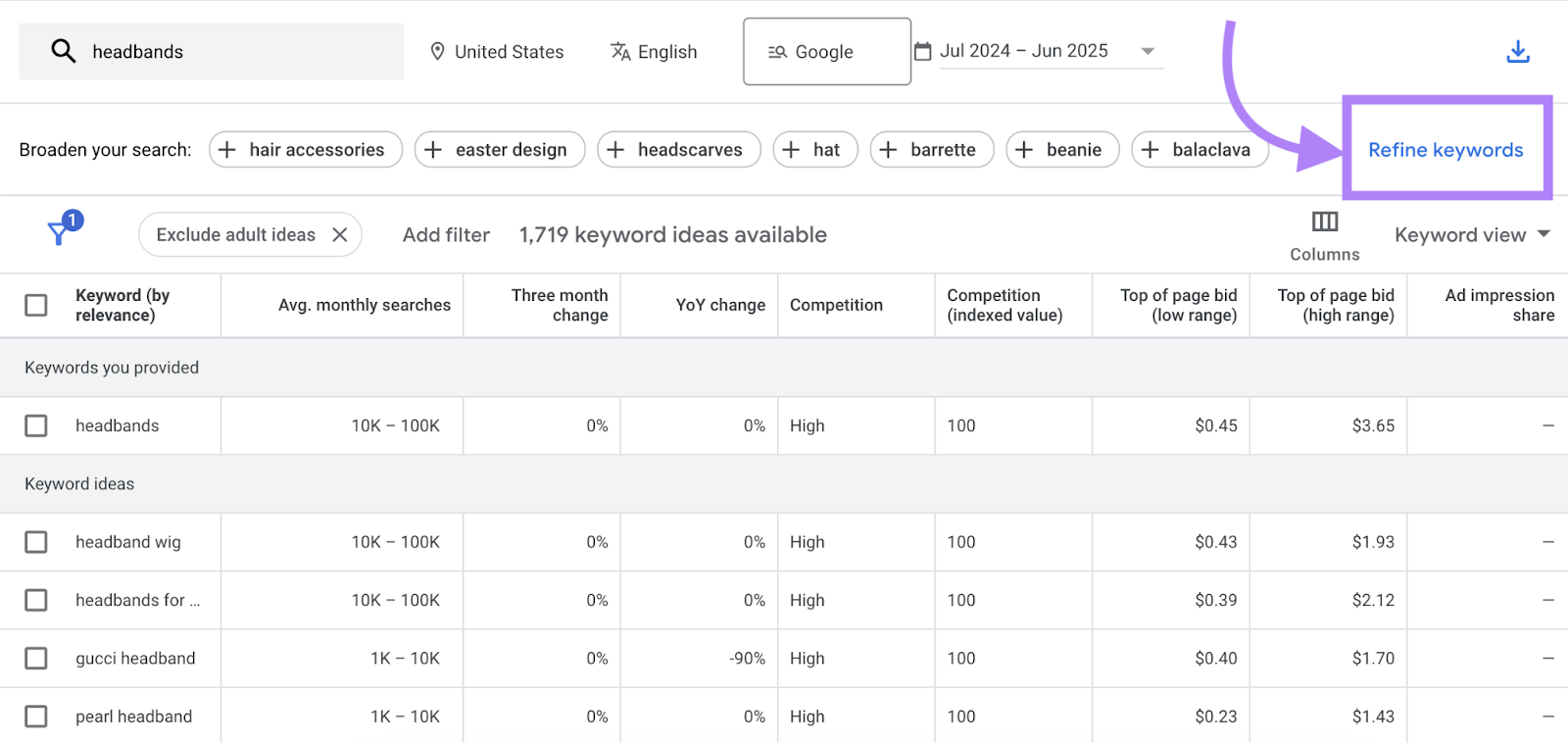
Unselect any categories that aren’t relevant to your business. For example, an ecommerce site might want to omit brands they don’t sell.

Pay attention to the average monthly searches (Avg. monthly searches) if you want to find new keywords for SEO. As knowing the monthly search volume can help you prioritize popular keywords.
And review the following columns if you want to find new keywords for your ads:
- Competition: A keyword’s level of competition for ads
- Top of page bid (low range): The lower end of what advertisers have typically paid for an ad that sits at the top of the page
- Top of page bid (high range): The higher end of what advertisers have typically paid for an ad that sits at the top of the page
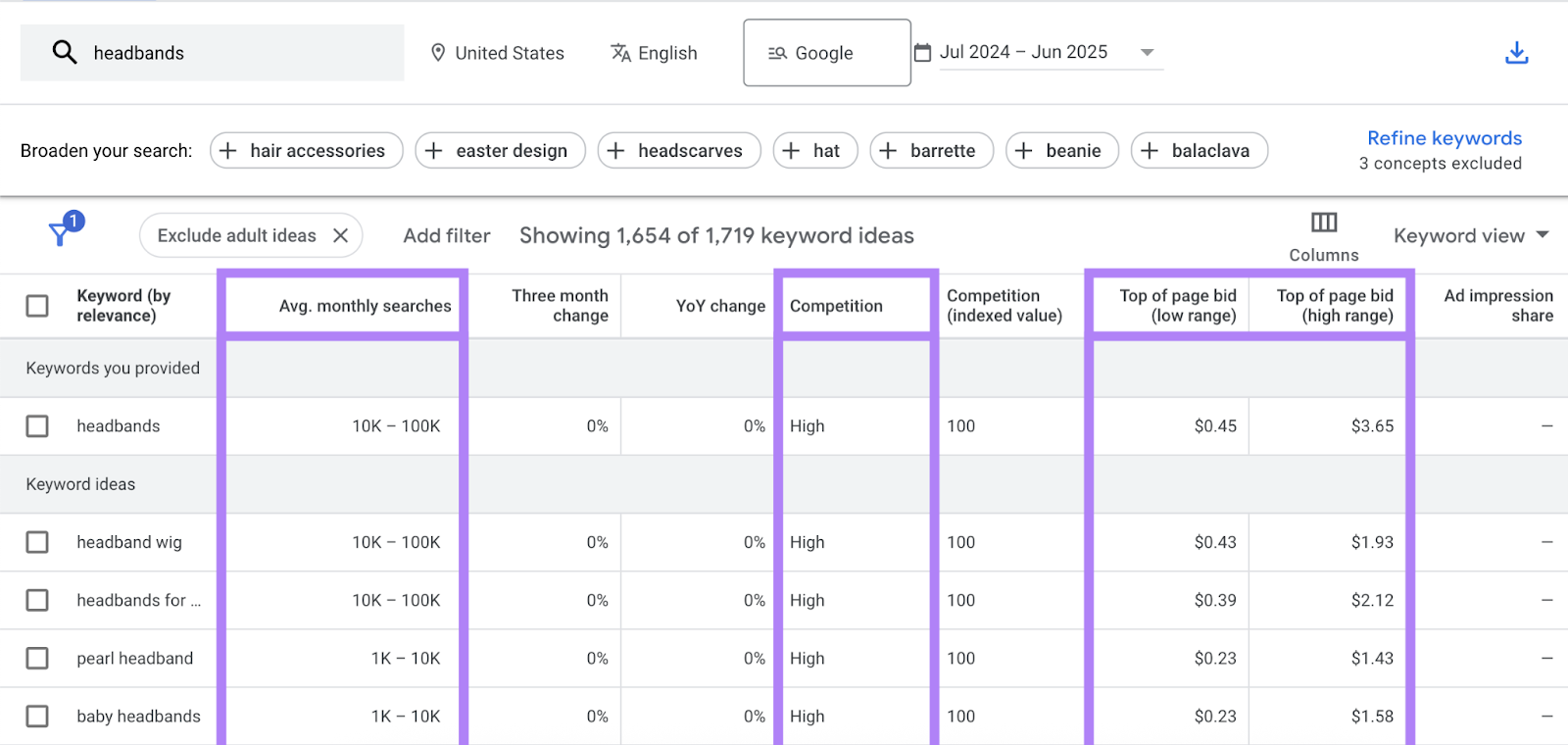
4. Google Trends
Finding keywords emerging in popularity with Google Trends can help you stay ahead of your competitors on new topics.
Open Google Trends, enter a seed keyword, and click “Explore.”
Adjust the time frame to the past 90 days. Scroll down to “Related queries” and click into the different queries to find ones with growth.

Like this one:

Create content for these new and popular keywords to capture space in search results before your competitors do.
5. Keyword Gap
Performing a keyword gap analysis helps you find which keywords your competitors rank for that you don’t. And creating content for these keywords can help you steal your rivals’ positions in search results.
To do this, head into Semrush’s Keyword Gap tool. Input your domain and those of up to four competitors and click “Compare.”
Scroll to the list of keywords.
Click “Untapped” to see which keywords you don’t rank for but at least one of your competitors does. And “Missing” to view keywords all entered competitors rank for but you don’t.

Aaron Whittaker, Vice President of Demand Generation at Thrive Internet Marketing Agency, used Semrush’s Keyword Gap for a client in the HVAC industry. This client was already ranking for thousands of keywords.
Aaron performed a keyword gap analysis with his client’s domain and websites in similar but not identical industries (like energy-efficiency government sites) rather than direct competitors. Because the client already ranked for many industry-specific keywords.
Then, Aaron’s team created and published content around those newly discovered terms.
The result?
Content developed around these identified keywords delivered a 25% increase in organic sessions over the course of six months, primarily driven by consumers looking for rebates and eco-friendly HVAC solutions—a new audience for the client.
6. Keyword Strategy Builder
Semrush’s Keyword Strategy Builder is great for finding keyword ideas to use for new content or to add to existing content.
Head to the tool, enter a few seed keywords, and click “Create.”

The tool will then create a list of pillar (main) pages and related subpages. And it provides the exact terms to incorporate along with metrics like keyword difficulty (KD %) and search volume (Volume) to help you prioritize.
Click the drop-down arrow for a page to see the full list of recommended keywords.
If you already have a page centered on the main term, focus on the additional keywords you haven’t yet used.
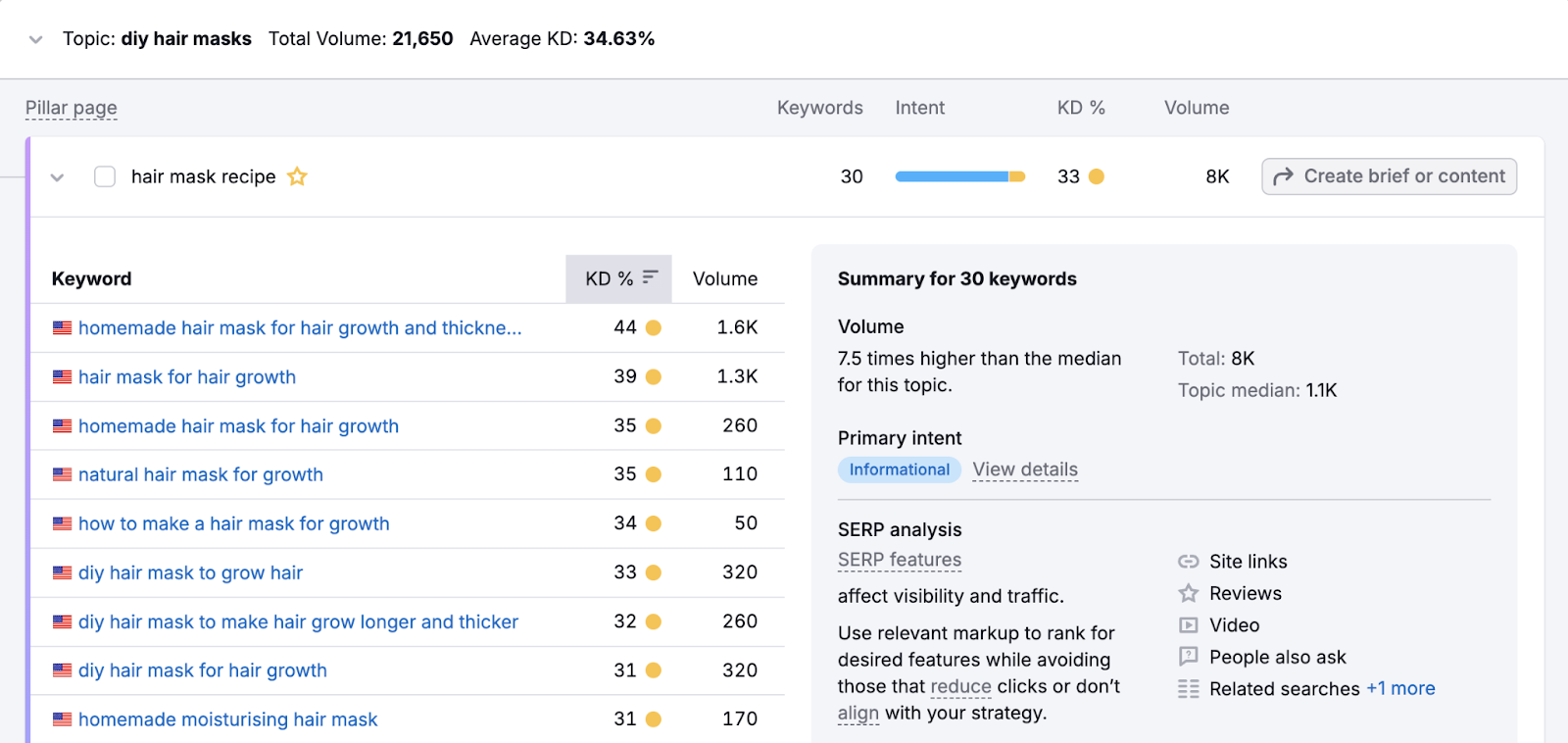
Then, add these keywords into your existing content by:
- Swapping terms into your headings and subheadings where they naturally fit
- Adding body sections that include the new keywords
- Updating meta descriptions (HTML that contains a short summary of a specific page)
Or click “Create brief or content,” select the circle next to “Article in Content Toolkit,” and click “Apply” to open AI Article Generator—which will write SEO-ready content with your new keywords.
You can make edits directly in AI Article Generator’s editor. And click “Publish” to publish the article directly to your WordPress site.
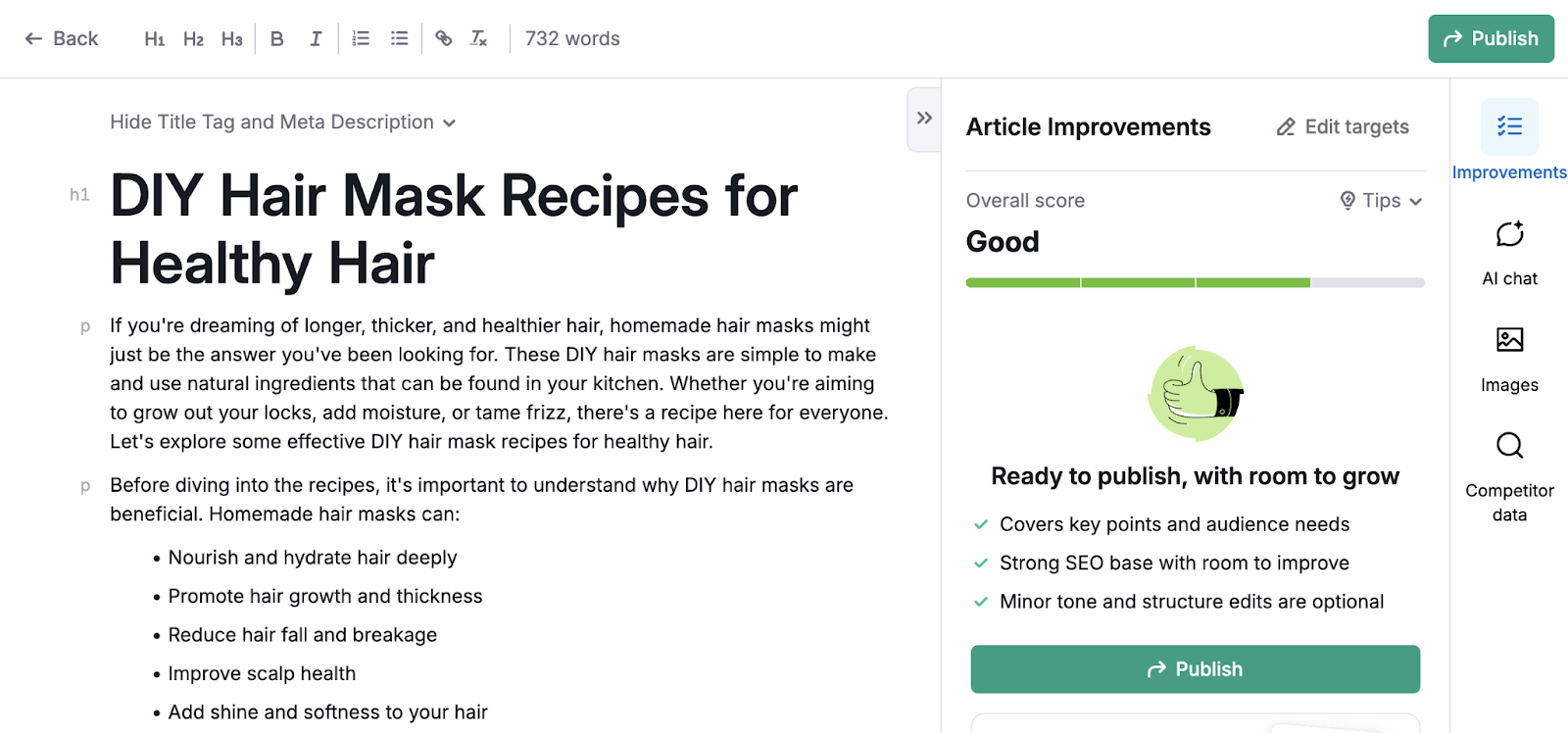
Improve Your SEO with New Keywords
There are plenty of keywords you aren’t ranking for but should be. Luckily, it isn’t difficult to discover those terms.
Once you find those new keywords, you can quickly write content for those terms at scale using the AI Content Generator.
Try it today.